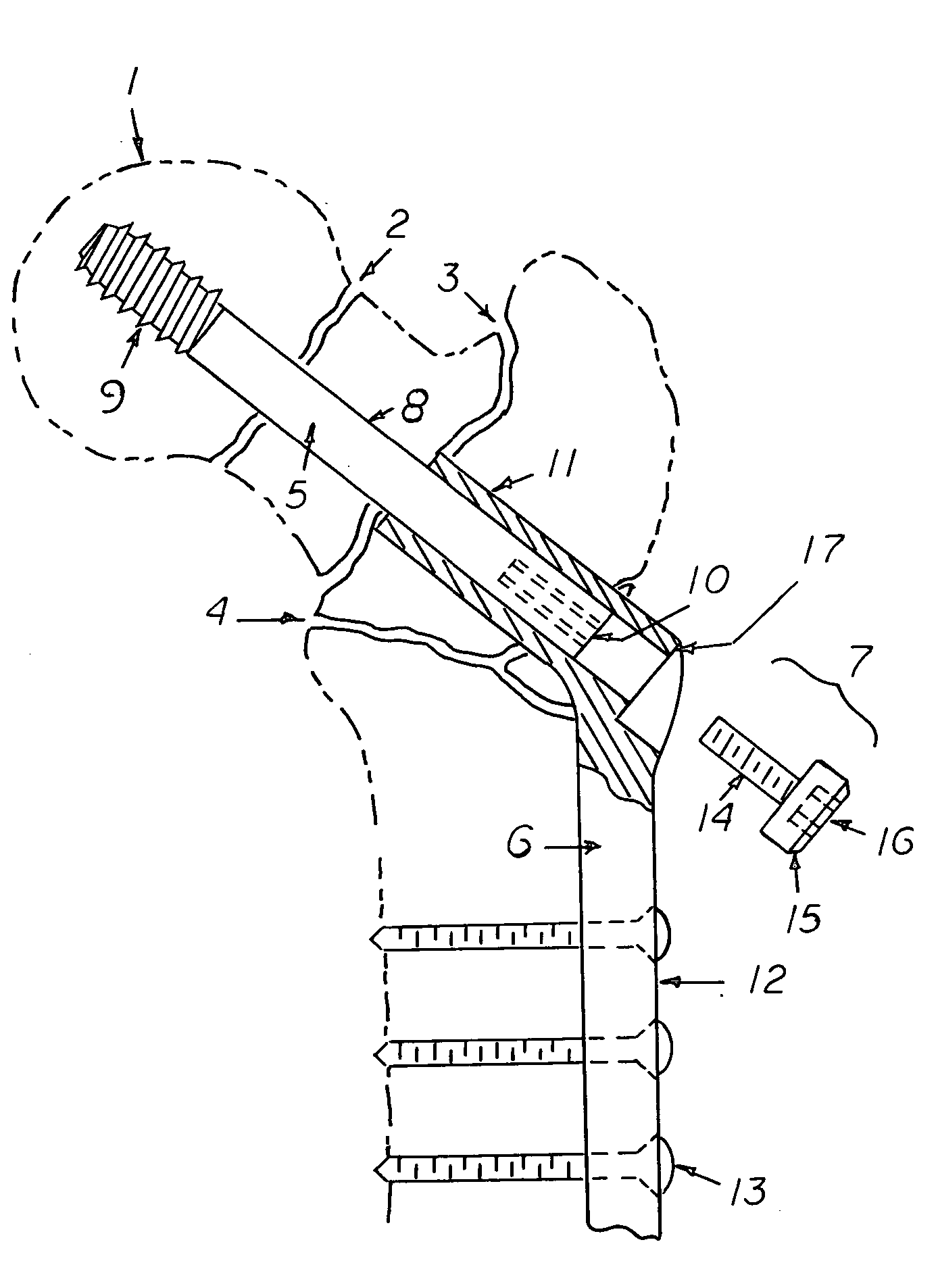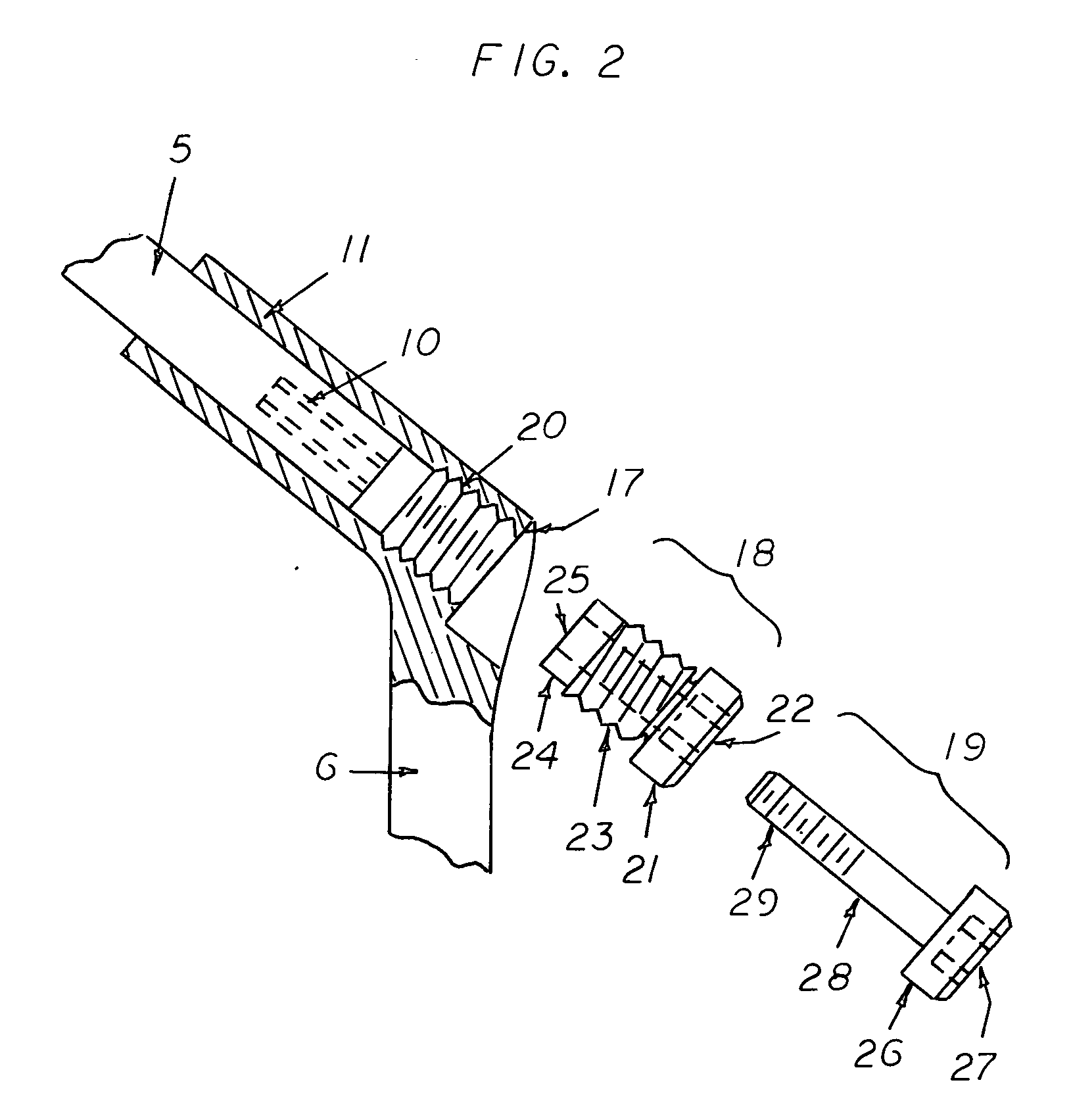Locking compression hip screw
a hip screw and compression technology, applied in the field of compression hip screws, can solve the problems of displacement of major fracture fragments by shearing
- Summary
- Abstract
- Description
- Claims
- Application Information
AI Technical Summary
Benefits of technology
Problems solved by technology
Method used
Image
Examples
Embodiment Construction
[0017]FIG. 1 shows a generic compression hip screw within a schematic representation of the proximal femur 1. Fracture patterns well controlled by a conventional hip screw include the femoral neck fracture 2, and the intertrochanteric hip fracture 3. The reverse obliquity hip fracture 4 is not well stabilized with a conventional compression hip screw and it is towards this fracture pattern, with or without comminuted extensions, that the Locking Compression Hip Screw is directed.
[0018] The three integral parts of a generic compression hip screw are: the femoral head lag screw 5, the side plate 6, and the compressing screw 7.
[0019] The femoral head lag screw consists of a smooth metallic shank 8 of variable length, with course cancerous bone threads 9 on the medial end and axially aligned female threads within the lateral end 10. The lateral end may also have a flat or slot milled on its surface so that a custom insertion tool (wrench) can gain torsional purchase on the lateral end...
PUM
 Login to View More
Login to View More Abstract
Description
Claims
Application Information
 Login to View More
Login to View More - R&D
- Intellectual Property
- Life Sciences
- Materials
- Tech Scout
- Unparalleled Data Quality
- Higher Quality Content
- 60% Fewer Hallucinations
Browse by: Latest US Patents, China's latest patents, Technical Efficacy Thesaurus, Application Domain, Technology Topic, Popular Technical Reports.
© 2025 PatSnap. All rights reserved.Legal|Privacy policy|Modern Slavery Act Transparency Statement|Sitemap|About US| Contact US: help@patsnap.com



